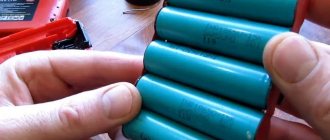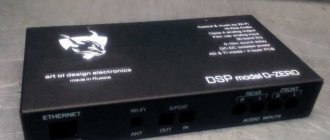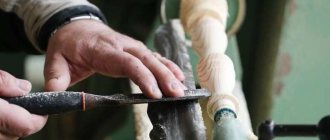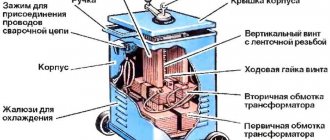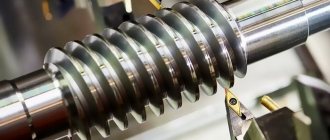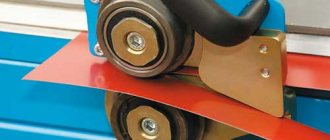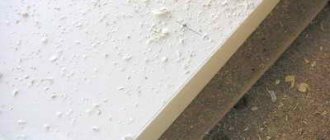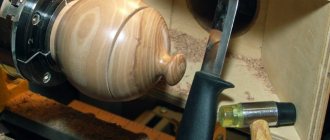The basic set of guillotine shears usually includes blades designed for processing soft, low-carbon steels and non-ferrous metals. However, if cutting high-alloy materials is required, then it is necessary to use a cutting tool of a completely different quality, since ordinary knives will very quickly lose their sharpness and may even break.
Therefore, for the manufacture of products and blanks from stainless steel, special, especially durable blades are purchased, and the knives are replaced on the machine. This operation is not so complicated, but it has certain specifics and requires some skill.
Parameters affecting the quality of guillotine cutting
Cutting a steel sheet on a guillotine occurs as a result of the relative displacement of two strong metal knives in a vertical plane. In this case, the upper knife can be installed parallel to the plane of the sheet being cut or at an angle to it. The second blade arrangement requires less force to do the job. The angle of inclination of the knife to the horizontal is called the cutting angle and is set depending on the thickness and strength of the material being processed.
The second parameter that ensures a high-quality cut is the gap between the knives . This is the horizontal distance between the vertical planes of movement of the cutting edges of the blades. The size of this gap is usually 6-9% of the thickness of the metal being cut and, in addition, depends on its strength, that is, the type of steel or non-ferrous alloy.
Setting up guillotine shears
For high-quality and productive operation of guillotine shears, it is necessary to configure them as accurately as possible. And the most important setting on which the productivity of the machine depends is setting the gap between the knives. If the gap of the working parts is set correctly, the quality of metal cutting will increase significantly. Therefore, it is extremely important, before you buy such an absolutely important machine as guillotine shears, that you familiarize yourself with the rules for adjusting the gaps on the model of the machine you have chosen.
Our article will discuss adjusting gaps on machines such as mechanical guillotine shears and hydraulic guillotine shears from PJSC Dolina.
The gap between the working bodies must be set in a ratio of 1/20-1/30 of the thickness of the metal sheet. The quality of the cut line depends on the correct setting of this indicator, so this indicator must be constantly checked when cutting metal of different thicknesses. The gap is changed by moving the working bodies using a special mechanism. It is important that you should not cut metal whose thickness has a maximum value and whose length is equal to the length of the working parts of this machine model. You should also ensure that when cutting a workpiece of the maximum permissible thickness, the pressure on the metal does not exceed 50 kg/mm2. Working at the maximum permissible values leads to maximum load on the power units of the machine and working parts, and contributes to their rapid wear and reduction of the service life of the machine.
If the strength of the workpiece exceeds 50 kg/mm2, then it is necessary to determine the maximum permissible thickness of the workpiece using a special formula δ X = δ√ 50/σBP, mm, where:
- δ—permissible thickness;
- σВР is the maximum permissible thickness of the workpiece for a certain machine model, as indicated in the documentation;
- 50 - strength of the workpiece.
To set the required gap between the working bodies, it is necessary to adhere to the following ratio: the thickness of the sheet has an indicator of 1, 3/3, 3/6.3, 6.3/12.5 - then the gap between the working bodies of guillotine shears should be respectively - 0.15, 0.35, 0.5.
To set the required gap between the upper and lower knives on guillotines produced by PJSC Kuvandyksky, it is necessary to loosen the bolts pos. 1 and pos. 3, figure 1, which secure the table to the frame. By manually rotating the flywheel according to the arrow indicated on the casing, lower the knife beam down until the table knives and knife beam overlap (10 mm - overlap of the knives).
Move the table forward and set the required gap, then, lowering the knife beam down, measure the gap along the entire length of the knives from left to right. After setting the gap, tighten the bolts. The movement of the table back relative to the knife beam is carried out with bolts in position 2, figure 1. The gaps between the guides and the knife beam are secured with spacers, position 4, figure 1.
Figure 1. Gap adjustment
Make sure that the blades of guillotine shears are always sharp and well sharpened - the quality of cutting and the efficiency of the machine depend on this.
Devices for improving cutting quality
Hydraulically driven guillotine shears ensure smooth movement of the upper cutting knife and, thanks to the presence of additional devices, ensure high cutting accuracy and cannot be overloaded during operation. Such devices include:
- front and back stops for quick sizing;
- hydraulic or mechanical clamps for securely securing the sheet and obtaining a cut without the formation of burrs or bends;
- light illumination of the shadow marking of the cutting line;
- possibility of automation of the technological process.
Using the front stops, you can quickly determine the size of the protruding part of the metal sheet by reading the readings from the surface of the movable ruler between the lower knife and the stop.
The position of the back stop is regulated by the operation of an electromechanical drive from the control panel or CNC commands. The rear stops are manually set by rotating the adjustment wheel on the left front of the machine. Under the wheel there is a mechanical counter for the actual distance from the cutting line to the back stop.
On most guillotine machines, two lamps mounted on a lowering crossarm ensure that the shadow is cast strictly along the line of the future cut. This helps to visually control the entire process and accurately determine dimensions.
As a result of the use of these devices and mechanisms on high-tech equipment, it is possible to produce products and workpieces from various grades of steel, of any size and in a wide range of metal thicknesses.
Where to buy a hydraulic guillotine
If you need a good and inexpensive hydraulic guillotine for cutting metal, you can find it in the catalog. The company offers different categories of this equipment, including:
- budget models like Stalex HQ01-1.6x2500B (price from 527,150 rubles, sheet thickness up to 1.6 mm, cut length up to 2500 mm);
- industrial automated installations, such as Stalex THS 2030x4 (cost from 1,136,200 rubles, workpiece thickness up to 4 mm, cut length up to 2030 mm);
- industrial CNC machines, for example, Stalex QC11K-4x3200 (price from 2,857,400 rubles, sheet thickness up to 4 mm, cutting length up to 3200 mm).
Return to list
Setting the gap between cutting edges
An absolutely even cut without burrs or bends on hydraulically driven guillotine shears can only be obtained with a correctly set gap between the knives. If the gap is too small, the metal will have an uneven edge, and if it is large, it will begin to bend during cutting.
Adjustment of the position of the cutting edges must be carried out even on high-quality equipment. It is done using control levers for the lower guide rollers of the scissors. The levers have several fixed positions, of which the uppermost one corresponds to the minimum clearance. When operating with numerical program control, regulation is carried out automatically using two horizontally located hydraulic cylinders.
Mechanically driven guillotines
Hydraulic driven units
A distinctive feature of such machines is the ability to cut fairly thick metal workpieces. Equipment manufacturers note in their operating instructions that for structural steels the maximum thickness can be up to 40 mm.
Similar devices on the edge of the blades develop a force of 200...400 tons. In this case, it is important to use thick knives that can transmit forces in the cutting zone.
Installation with hydraulic drive. The pumping station is located outside the machine
To operate a hydraulically driven guillotine, you must have a special pumping station. From it, oil is supplied through reinforced hoses to the actuators. Liquid pressure can reach up to 135...150 bar. Hydraulic cylinders transmit force to the actuator through a system of levers.
The main advantage of such guillotines is their quiet operation. The knives move without impact.
On the control panel, the operator specifies a number of parameters, the built-in computer will make the calculations itself:
- what gap is required between the knives;
- where to set the emphasis;
- at what speed should oil be supplied to the hydraulic system?
If it is indicated that several parts of the same type will be cut, then this parameter is also indicated. Then the material will be supplied automatically.
The operator and assistant can only:
- place the sheet of metal on the work table;
- align it with the guides;
- align with stops;
- indicate the number of the program by which you want to cut metal;
- set the number of required parts.
At the end of the cycle, on the back side of the machine there will be chopped blanks or parts that need to be taken to the semi-finished product site. Other employees of the company use them in the following production processes.
The price for such machines is high, amounting to several tens or even hundreds of thousands of euros. Guillotines of this type are made to order. In the future, the equipment manufacturer maintains it throughout the entire life cycle of the process unit, provides it with programs and offers original spare parts. If necessary, even a fairly old machine can be modernized. After modernization, it is ready to serve on equal terms with new units for quite a long time.
Video: cutting metal with a guillotine.
Food for thought. In the thirties of the twentieth century, DIP-250 and DIP-350 lathes were purchased in Germany. More than eighty years have passed. This equipment continues to be successfully used at a number of enterprises. After major repairs, gun barrels for modern guns and tanks are processed on similar machines. Machines can last quite a long time.
Video: CNC hydraulic guillotine.
Electromechanical guillotine shears
The most common type of machine is the electromechanical guillotine shear. A shaft with a flywheel constantly rotates in them. Through the crank mechanism, torque is transmitted to the active knife.
To make a cut you need:
- place a sheet of metal on the table;
- set the focus to the specified size;
- fix the workpiece on the table and press it against the stop;
- press the control pedal.
The metal will be cut according to the markings. By moving the sheet again to the stop, you can repeat the operation.
Electromechanical guillotine
These machines are quite lightweight. They equip small workshops and fairly large enterprises. They are characterized by high performance. You can cut up to 60 parts in a minute.
The disadvantage is the noise during operation. Here the metal is cut with a strong blow. You often have to send knives for sharpening. Edges tend to chip when subjected to impact loads.
It is necessary to frequently check the condition of the edges of finished products. If the formation of bent edges and burrs is observed, then the knives are removed and sent to a sharpening machine.
Video: operating principle of electromechanical guillotine shears.
Pneumatic guillotines
If there is a developed system of pneumatic pipelines, the enterprise uses equipment powered by compressed air. Pneumatic guillotines use air compressed by compressors to carry out basic production activities. They are equipped with pneumatic cylinders.
Installations of this type require a receiver. The volume of air used in the cycle can reach several liters, so a supply of working fluid is needed.
Pneumatic guillotine
The operation of such devices is somewhat louder than when using hydraulics. But there are also advantages. On such machines it is easier to install computer control. Therefore, a number of European countries producing technological equipment are focusing on creating just such guillotines. It is easier to configure here; programs for managing production operations are written relatively simply.
Training operators for such machines is also easy. After just 2-3 days of work, workers master the basic techniques of working on a guillotine. All that remains is to issue them a production task, indicate the placement of workpieces and areas for unloading semi-finished products.
Video: guillotine shears.

